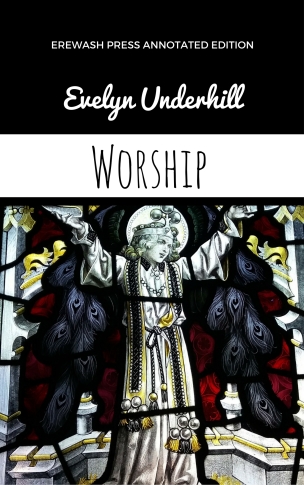Worship, in all its grades and kinds, is the response of the creature to the Eternal: nor need we limit this definition to the human sphere. There is a sense in which we may think of the whole life of the Universe, seen and unseen, conscious and unconscious, as an act of worship, glorifying its Origin, Sustainer, and End.
Worship is an Anglican classic, written by Evelyn Underhill, a mystic and spiritual writer of the early twentieth century, whose reputation as a Christian intellectual stands alongside figures such as Dorothy L. Sayers, C.S. Lewis and Charles Williams. Her writings show a profound interest in the spiritual reality she perceived pressing in on human life from all directions, and a powerful sense of the importance of beauty. In Worship she explores the nature of Christian worship, and the way the different Christian traditions express their beliefs through their worship life. She examines, analyses and sometimes critiques the ways in which Christians worship, producing a powerful and moving account of worship as a central aspect of religious life, and of reality itself.
Liturgical worship shares with all ritual action the character of a work of art. Entering upon it, we leave the lower realism of daily life for the higher realism of a successive action which expresses and interprets eternal truth by the deliberate use of poetic and symbolic material. A liturgical service should therefore possess a structural unity; its general form and movement, and each of its parts, being determined by the significance of the whole. By its successive presentation of all the phases of the soul’s response to the Holy, its alternative use of history and oratory, drama and rhythm, its appeals to feeling, thought, and will, the individual is educated and gathered into the great movement of the Church.
Read more about Underhill and Worship at Quite Irregular, where Jem has included lots of the most quotable passages.
